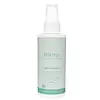What's inside
What's inside
 Key Ingredients
Key Ingredients

 Benefits
Benefits

 Concerns
Concerns

 Ingredients Side-by-side
Ingredients Side-by-side

Aloe Barbadensis Leaf Extract
EmollientAnthemis Nobilis Flower Extract
MaskingCalendula Officinalis Flower Extract
MaskingCamellia Oleifera Leaf Extract
AstringentPolyquaternium-16
Polyquaternium-10
Hydrolyzed Wheat Protein
Skin ConditioningHydrolyzed Wheat Starch
Skin ConditioningCocamidopropyl Pg-Dimonium Chloride Phosphate
PEG-40 Hydrogenated Castor Oil
EmulsifyingGlycine Soja Oil
EmollientOryzanol
Skin ConditioningTocopherol
AntioxidantPanthenol
Skin ConditioningPvp
Emulsion StabilisingMaltodextrin
AbsorbentParfum
MaskingGeraniol
PerfumingLinalool
PerfumingBenzyl Benzoate
AntimicrobialCitronellol
PerfumingEugenol
PerfumingHydroxycitronellal
PerfumingLimonene
PerfumingAmyl Cinnamal
PerfumingSodium Gluconate
Skin ConditioningPotassium Sorbate
PreservativeChlorphenesin
AntimicrobialPhenoxyethanol
PreservativeAloe Barbadensis Leaf Extract, Anthemis Nobilis Flower Extract, Calendula Officinalis Flower Extract, Camellia Oleifera Leaf Extract, Polyquaternium-16, Polyquaternium-10, Hydrolyzed Wheat Protein, Hydrolyzed Wheat Starch, Cocamidopropyl Pg-Dimonium Chloride Phosphate, PEG-40 Hydrogenated Castor Oil, Glycine Soja Oil, Oryzanol, Tocopherol, Panthenol, Pvp, Maltodextrin, Parfum, Geraniol, Linalool, Benzyl Benzoate, Citronellol, Eugenol, Hydroxycitronellal, Limonene, Amyl Cinnamal, Sodium Gluconate, Potassium Sorbate, Chlorphenesin, Phenoxyethanol
Alternatives
Ingredients Explained
These ingredients are found in both products.
Ingredients higher up in an ingredient list are typically present in a larger amount.
Parfum is a catch-all term for an ingredient or more that is used to give a scent to products.
Also called "fragrance", this ingredient can be a blend of hundreds of chemicals or plant oils. This means every product with "fragrance" or "parfum" in the ingredients list is a different mixture.
For instance, Habanolide is a proprietary trade name for a specific aroma chemical. When used as a fragrance ingredient in cosmetics, most aroma chemicals fall under the broad labeling category of “FRAGRANCE” or “PARFUM” according to EU and US regulations.
The term 'parfum' or 'fragrance' is not regulated in many countries. In many cases, it is up to the brand to define this term.
For instance, many brands choose to label themselves as "fragrance-free" because they are not using synthetic fragrances. However, their products may still contain ingredients such as essential oils that are considered a fragrance by INCI standards.
One example is Calendula flower extract. Calendula is an essential oil that still imparts a scent or 'fragrance'.
Depending on the blend, the ingredients in the mixture can cause allergies and sensitivities on the skin. Some ingredients that are known EU allergens include linalool and citronellol.
Parfum can also be used to mask or cover an unpleasant scent.
The bottom line is: not all fragrances/parfum/ingredients are created equally. If you are worried about fragrances, we recommend taking a closer look at an ingredient. And of course, we always recommend speaking with a professional.
Learn more about ParfumPhenoxyethanol is a preservative that has germicide, antimicrobial, and aromatic properties. Studies show that phenoxyethanol can prevent microbial growth. By itself, it has a scent that is similar to that of a rose.
It's often used in formulations along with Caprylyl Glycol to preserve the shelf life of products.